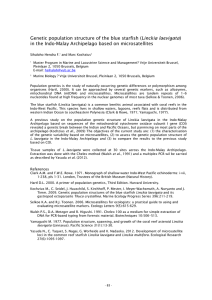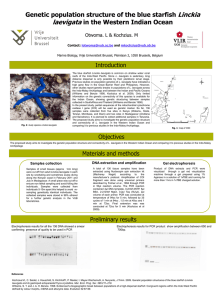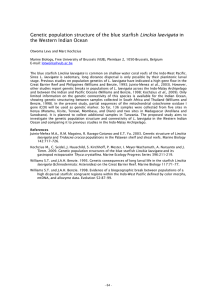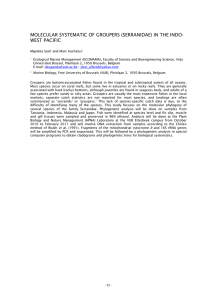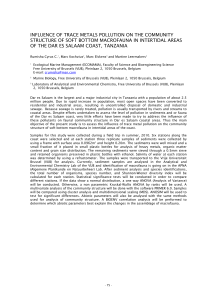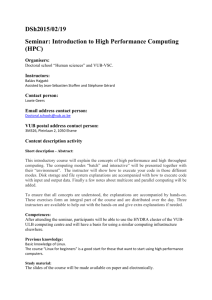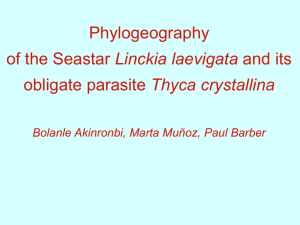LINCKIA LAEVIGATA
advertisement
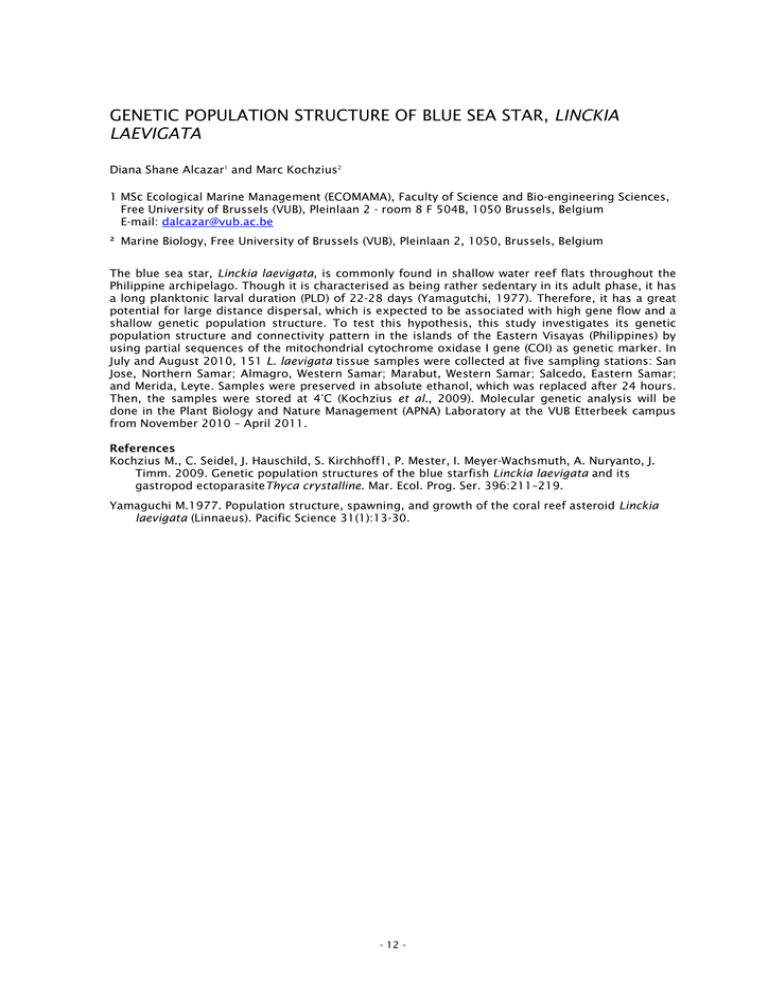
GENETIC POPULATION STRUCTURE OF BLUE SEA STAR, LINCKIA LAEVIGATA Diana Shane Alcazar1 and Marc Kochzius2 1 MSc Ecological Marine Management (ECOMAMA), Faculty of Science and Bio-engineering Sciences, Free University of Brussels (VUB), Pleinlaan 2 - room 8 F 504B, 1050 Brussels, Belgium E-mail: dalcazar@vub.ac.be ² Marine Biology, Free University of Brussels (VUB), Pleinlaan 2, 1050, Brussels, Belgium The blue sea star, Linckia laevigata, is commonly found in shallow water reef flats throughout the Philippine archipelago. Though it is characterised as being rather sedentary in its adult phase, it has a long planktonic larval duration (PLD) of 22-28 days (Yamagutchi, 1977). Therefore, it has a great potential for large distance dispersal, which is expected to be associated with high gene flow and a shallow genetic population structure. To test this hypothesis, this study investigates its genetic population structure and connectivity pattern in the islands of the Eastern Visayas (Philippines) by using partial sequences of the mitochondrial cytochrome oxidase I gene (COI) as genetic marker. In July and August 2010, 151 L. laevigata tissue samples were collected at five sampling stations: San Jose, Northern Samar; Almagro, Western Samar; Marabut, Western Samar; Salcedo, Eastern Samar; and Merida, Leyte. Samples were preserved in absolute ethanol, which was replaced after 24 hours. Then, the samples were stored at 4°C (Kochzius et al., 2009). Molecular genetic analysis will be done in the Plant Biology and Nature Management (APNA) Laboratory at the VUB Etterbeek campus from November 2010 – April 2011. References Kochzius M., C. Seidel, J. Hauschild, S. Kirchhoff1, P. Mester, I. Meyer-Wachsmuth, A. Nuryanto, J. Timm. 2009. Genetic population structures of the blue starfish Linckia laevigata and its gastropod ectoparasiteThyca crystalline. Mar. Ecol. Prog. Ser. 396:211–219. Yamaguchi M.1977. Population structure, spawning, and growth of the coral reef asteroid Linckia laevigata (Linnaeus). Pacific Science 31(1):13-30. - 12 -
